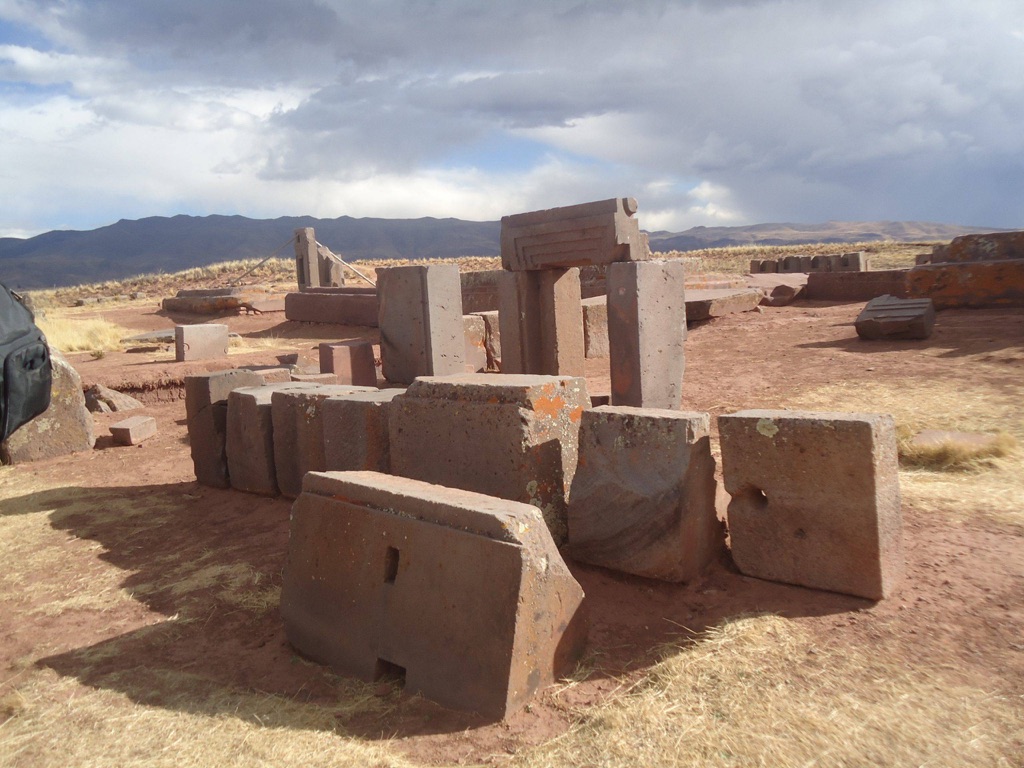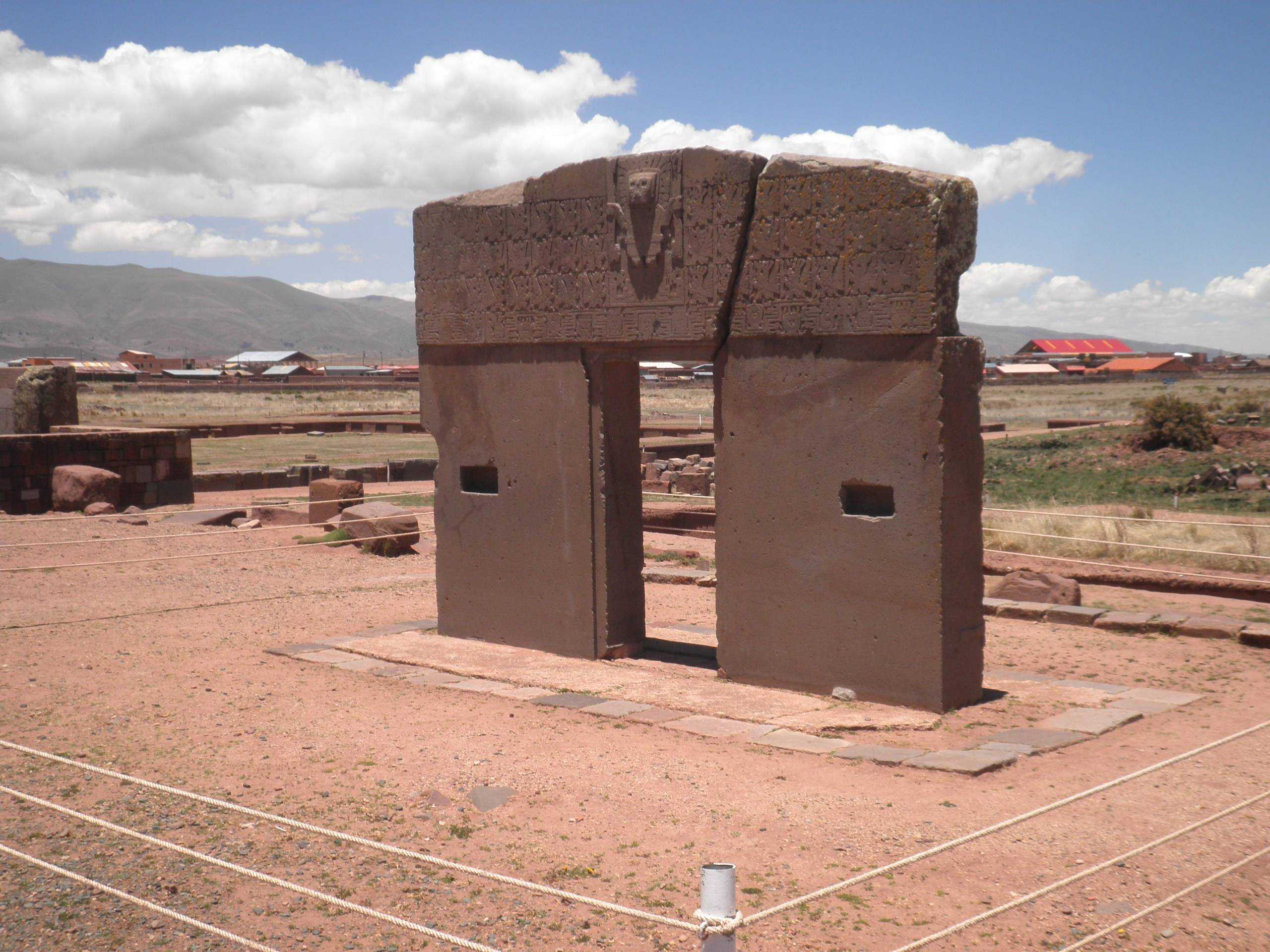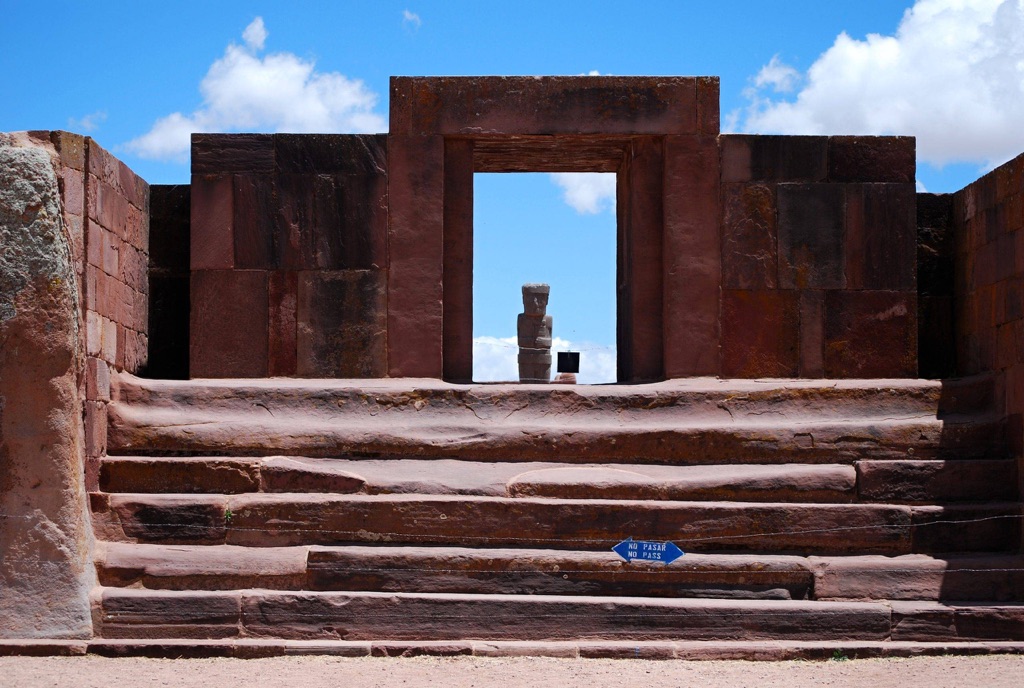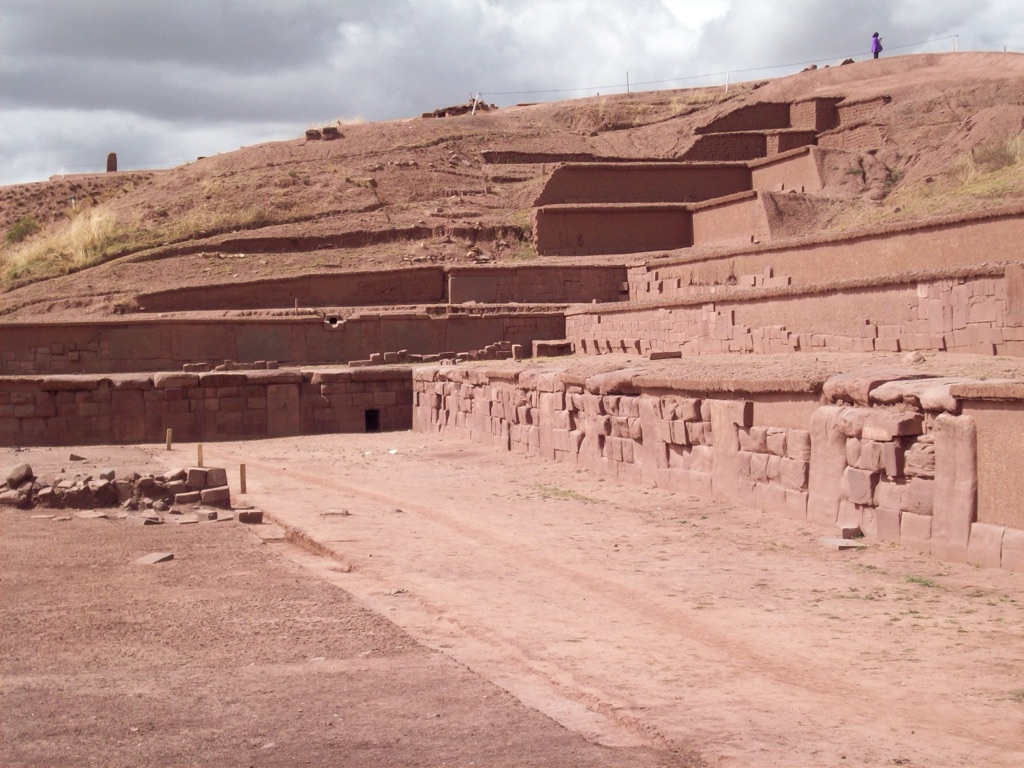The Akapana Pyramid, located in the ancient city of Tiwanaku in Bolivia, is a remarkable testament to the architectural prowess and cultural richness of the pre-Incan Tiwanaku civilization. This seven-tiered platform pyramid, dating back to 500-900 AD, stands as one of the most significant archaeological sites in South America. Despite being partially destroyed due to looting and erosion, the pyramid’s remaining structure and the artifacts found within its complex offer invaluable insights into the civilization that once thrived in this region.
Tiwanaku Empire

The Tiwanaku Empire, originating from the high Andean plateau, was a pre-Columbian civilization that held sway in South America around 300 to 1000 CE. The empire’s heart was in the city of Tiwanaku, located near Lake Titicaca in present-day Bolivia. Tiwanaku’s people are famous for their advancements in agricultural technology; they engineered raised fields to prevent frost damage and maximize crop growth. The architecture and art of the Tiwanaku Empire reflect a sophisticated understanding of astronomy and spirituality, with monuments like the Akapana Pyramid and the Gate of the Sun displaying their cultural complexity.
As the Tiwanaku Empire expanded, it influenced vast areas, including Peru and Chile, leading to the spread of its distinctive artistic and cultural practices. The Tiwanaku people developed a complex societal hierarchy, evidenced by their impressive urban planning and monumental construction projects. Although the factors leading to their decline remain debated, with theories ranging from drought to social upheaval, the legacy of the Tiwanaku Empire endures. Archaeological sites reveal the persistence of their architectural styles and ceremonial practices, which later civilizations, like the Inca, would draw upon. The Tiwanaku Empire’s contribution to Andean culture is an essential chapter in the history of indigenous South American societies.
The Tiwanaku Empire was renowned for its architectural innovations and spiritual iconography, which were deeply intertwined with their understanding of the cosmos. Historical sites such as the Akapana Pyramid and the Gate of the Sun are emblematic of their mastery in stone construction and their ability to align these structures with celestial events. These practices not only highlight their religious beliefs but also their sophisticated knowledge of astronomy, which played a crucial role in their agricultural success. The raised field system, known as “suka kollus,” is another testament to their ingenuity, allowing them to cultivate crops in the harsh Andean environment efficiently.
The decline of the Tiwanaku Empire is a subject of ongoing research and debate among historians and archaeologists. A combination of environmental and social factors is believed to have contributed to its downfall. Prolonged droughts, which would have severely impacted their agriculture-based economy, are often cited as a primary cause. These environmental stresses likely exacerbated existing social tensions and led to the eventual fragmentation of their society. The exact timeline of their decline is still uncertain, but it is generally agreed that by around 1000 CE, the Tiwanaku state had collapsed, leaving behind their monumental ruins as a testament to their once-great civilization.

The Tiwanaku culture lasted for approximately 700 years, a significant period during which they laid the foundations for future Andean civilizations. Their influence extended beyond their architectural and agricultural achievements, impacting the social and political structures of successor states. The Inca Empire, in particular, drew heavily from the Tiwanaku legacy, adopting and adapting many of their technological and cultural practices. The Inca’s use of the quipu for record-keeping, their road systems, and even aspects of their religion show clear traces of Tiwanaku influence. This cultural continuity underscores the enduring impact of the Tiwanaku Empire on the Andean region.
Historical sites and places associated with the Tiwanaku Empire continue to fascinate and attract scholars and tourists alike. These sites not only serve as a window into the past, allowing us to glimpse the complexity and sophistication of pre-Columbian civilizations but also remind us of the resilience and ingenuity of the human spirit in the face of environmental and social challenges. The legacy of the Tiwanaku, preserved in their monumental architecture, intricate art, and innovative agricultural practices, remains a pivotal chapter in the history of the Americas, highlighting the rich cultural tapestry of indigenous South American societies.
Explore The Tiwanaku Empire, it’s Historical Sites and Artifacts

Kalasasaya
Kalasasaya, an ancient archaeological site located in western Bolivia, is a part of the larger Tiwanaku site, a UNESCO World Heritage Site. The name “Kalasasaya” translates to “standing stones” and is a testament to the site’s impressive stone architecture. The complex is renowned for its precision-cut stones and the Gateway of the Sun, a monolithic doorway intricately carved with depictions of a deity and celestial symbols.

Gate of the Sun, Tiwanaku
Located in the highlands of western Bolivia, the Gate of the Sun is a monolithic structure that stands as a testament to the architectural prowess and astronomical knowledge of the ancient Tiwanaku civilization. This intriguing artifact, carved from a single block of andesite granite, has been a source of fascination and speculation for historians, archaeologists, and visitors alike.

